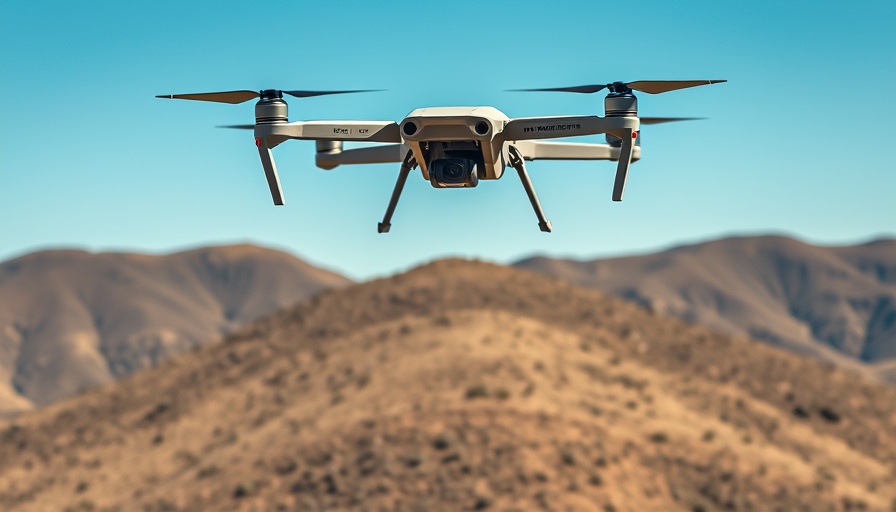
The Embracing of Advanced Drone Technology in Military Operations
AeroVironment's recent delivery of the Group 2 P550 autonomous eVTOL UAS to the U.S. Army has ignited discussions on the strategic significance of unmanned systems in modern warfare. The P550 not only represents a technical achievement but also highlights a major shift in how military forces are rethinking their operational strategies in light of evolving threats. With its advanced operational capabilities, the P550 showcases the trend of integrating cutting-edge technology in military applications.
Why the P550 Matters for Enhanced Situational Awareness
The P550 is designed with a Modular Open Systems Approach (MOSA), enabling it to rapidly adapt to ever-changing battlefield scenarios. This is crucial in today’s environment where wars are often fought with speed and intelligence. As military operations increasingly rely on real-time data for decision-making, systems like the P550 that provide superior situational awareness through AI and advanced sensors become indispensable.
The P550's Impact on Military Training and Efficiency
Alongside the delivery of the P550 systems, AeroVironment also provided comprehensive new equipment training, a step that underscores the importance of preparedness. The implementation of a “train-the-trainer” model means that units can quickly assimilate this drone technology into their operational protocols, enhancing readiness across the board. This approach aligns with ongoing initiatives to streamline military operations in the face of tight timelines and resource constraints.
A Future-Proof Solution in Unmanned Aerial Systems
The P550 stands out not just for its immediate capabilities but also for its potential longevity in service. With a payload capacity of up to 15 pounds and a gross take-off weight of 55 pounds, it’s engineered for flexibility—fields like reconnaissance, surveillance, and direct targeting operations. For military planners, the P550 is an investment that promises to keep pace with technological advances due to its open architecture.
Beyond the Battlefield: The P550's Broader Applications
While primarily aimed at military use, the technologies underpinning the P550 could eventually see adaptations in civilian applications, such as disaster response and search and rescue missions. The versatility and reliability exhibited by such drones are attractive to both military and non-military stakeholders, signaling a future where drones play an integral role across various sectors.
In summary, the delivery of the P550 systems marks a pivotal moment for the U.S. Army and military operations globally. As these technologies continue to evolve, they fundamentally reshape not just arms and tactics, but also how we envision modern warfare.
To learn more about the intersection of technology and military strategy, stay informed on emerging advancements that will shape our future. Explore the potential of unmanned systems in operations and consider how they might affect industries beyond defense.
 Add Row
Add Row  Add
Add 




Write A Comment